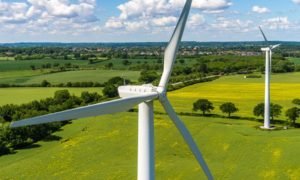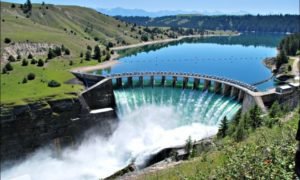Hydroelectric energy is one of the oldest renewable sources of energy generated through hydroelectric power technology. The hydropower plant produces environmentally friendly and clean energy as compared to fossil fuels. Almost 20% of the world’s electricity is produced by hydroelectric power.
Pros:
1. Renewable source of energy: Hydroelectric energy is a renewable source of electricity since it uses water to produce electricity. The energy sources will not run out since running water is constantly available.
2. Reliable: It is a reliable source of energy. Countries with large hydropower resources use hydroelectricity as the main source of energy. Hydroelectric plants are more reliable with low failure rate.
3. Clean source of energy: Hydroelectric power generation is not contaminating. The energy produced by the hydroelectric plants does not produce any toxic chemicals or gases to pollute the atmosphere.
4. Cost-effective: Hydropower is cost-effective although the initial outlay cost is high. Electricity production process is simple and requires little maintenance of hydroelectric power plant. The costs do not fluctuate since water sources are infinite and not affected by market volatility.
5. Safe: Hydroelectricity is safer compared to other fossil fuels and nuclear energy. It only uses water to generate electricity.
6. Recreational opportunities: Water stored in hydroelectric power plants can be used for irrigation during droughts or for recreational activities like swimming, fishing and boating.
7. Long life: Hydroelectric power plants have a long life hence can generate electricity for many years.
8. Less restart time: As compared to other conventional power stations, hydropower stations takes few minutes to power up and shutdown.
9. Controlled energy production: When electricity is not needed, water flow from the dams can be stopped to save the energy. This ensures electricity is produced only when it is needed.
10. Variable size: Hydroelectric plants don’t have fixed size and are built to fit in any environment compared to other types of energy.
Cons:
1. A threat to people: If strong water currents are released from the dams, they can cause floods in the downstream area destroying livelihood and property of people in the local community.
2. High initial cost: Although the return on investment is high, the initial cost of installing the hydroelectric power plants is very high.
3. Environmental consequences: Creation of large dams to build hydroelectric plant causes disruption to the surrounding environment leading to relative consequences.
4. Large reservoir: Hydroelectricity construction requires a large reservoir which is very expensive and time-consuming. It can also cause relocation of individuals living in the surrounding area.
5. Drought: Drought can affect the production of electricity since electricity production is directly related to the flow of water in the dam. Low levels of water lead to low production of electricity.
6. Earthquakes: Large dam constructions has resulted in massive earthquakes in some regions like in China and in India.
7. Destruction of fish Passage: construction of dams alter the normal flow of water in the rivers. This can block fish migratory.
8. Methane and Carbon dioxide gases: Gases produced by decaying trees near the hydroelectric plant station contributes to global warming.
9. Destroy marine life: Constructions of dams along the rivers prevent the flow of silt and microorganism downstream leading to the shortage of food. This causes migration of fish species and other sea creatures.
10. Selection of suitable land: Electricity generation depends on the altitude between the reservoir and turbine thus reservoir construction cannot be done anywhere. A Proper land examination has to be carried out to ensure increased electricity production and also to avoid any adverse ecological effects.



